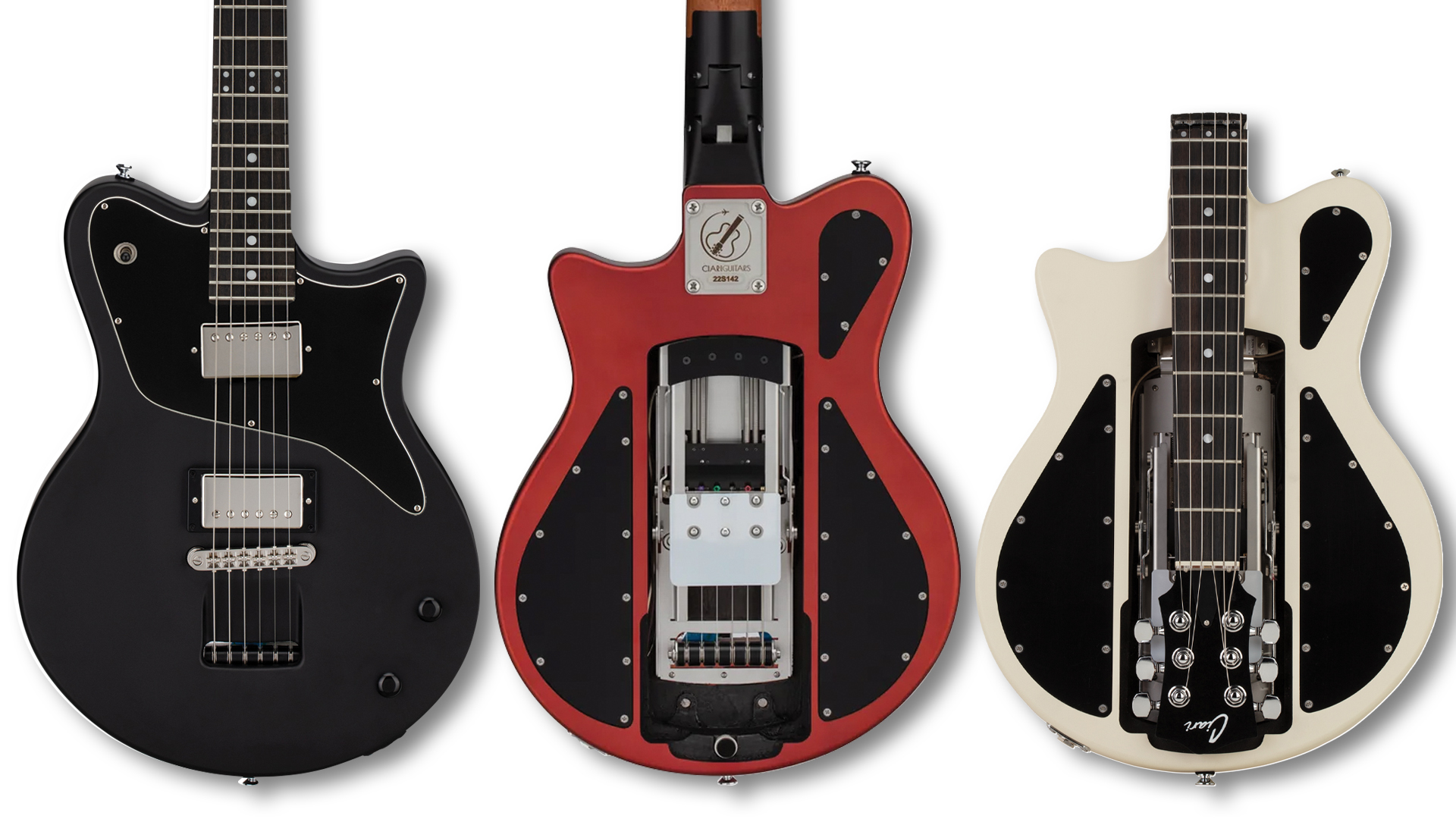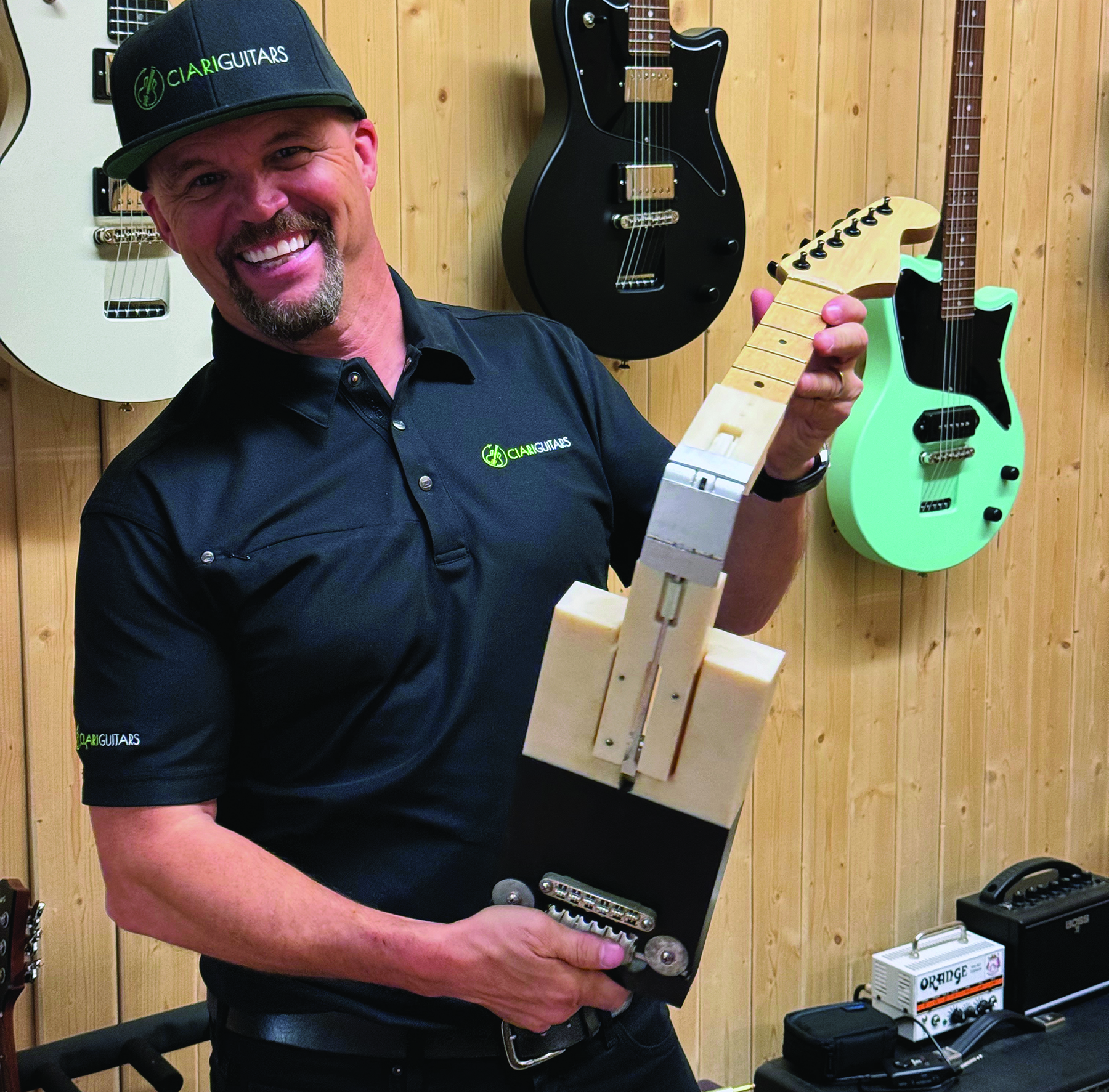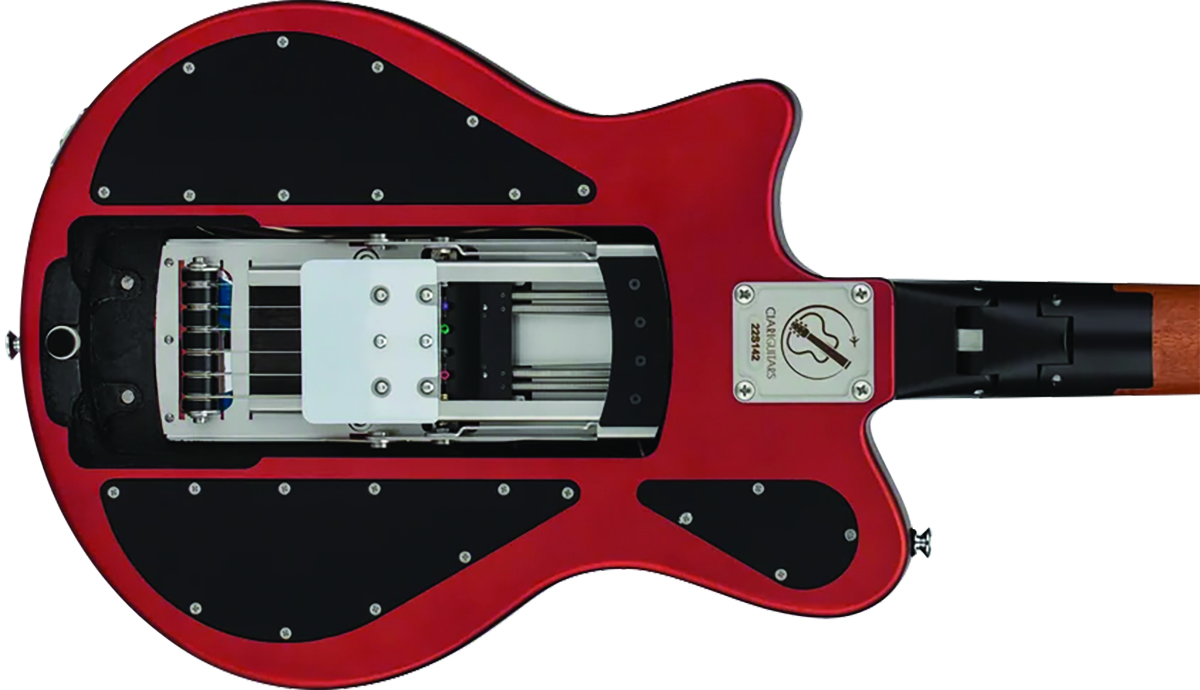"We unleashed an approach that had been deemed impossible." With its innovative technology and updated Ascender model, Ciari Guitars is rising high as the industry’s premier travel guitar maker
Ciari founder Jonathan Spangler tells the story behind his company's innovative folding guitar design and technology

“I invented it because I wanted it,” says Jonathan Spangler, founder and CEO of Ciari Guitars, talking about the creation of his Ascender line of folding-neck electrics. As a musician and an attorney whose job mandated extensive travel, Spangler needed a full-sized guitar that could fit into the space afforded most airline passengers — under the seat.
His solution was a stealthy, collapsible guitar worthy of MI5 technology, featuring a patented mid-neck hinge and a concealed actuator lever on the back that unlocks the hinge, loosens the strings to three pounds of tension and allows the guitar to fold in half. When ready for action, the neck is unfolded and the actuator lever solidly locks everything in place, with the strings fully tensioned and needing only some tuning tweaks to be readied for play.
Spangler’s journey into guitar making was unorthodox, to say the least, and began while he was working as a patent attorney for a Southern California medical-device firm that focused on spine surgery. “We unleashed a technology and an approach to the spine that had been deemed impossible before,” Spangler says. “That was immensely rewarding, and in about 15 years we went from two million in sales to almost a billion.
"As we’re talking, I’m looking at a jersey that [NBA Hall of Fame player] Bill Walton signed for me. He was one of our patient-ambassadors who said in no uncertain terms ‘I was figuring out when and how to commit suicide because I was in so much back pain.’ So to change people’s lives and give them their life back, how do you put a price tag on that?”

Going from medical technology to guitar making is quite a leap. How did it come about?
We designed backward from my idea for a guitar that I didn’t have to check at the airport. I wanted to have just two things I’m traveling with: my clothes and one personal item — meaning my guitar, my computer and headphones — and I didn’t want to check anything else. So we started with that requirement and engineered our way to make it so.
You were obviously aware of other folding-neck guitars. Tell us about the approach you took with the Ascender.
All the latest guitar news, interviews, lessons, reviews, deals and more, direct to your inbox!
I did survey the other options and certainly the Voyage Air [folding-neck acoustic] was one, but it didn’t solve what I wanted because it can’t fit under the seat. Then there was the way it folds into the playing position, toward the front of the guitar, so the strings go everywhere. So string management was also something we sought to solve with the Ascender. I’ve always said that sometimes it’s better not to be first. It’s better to come into an area and improve upon the baseline offerings.
How does your folding system differ from other designs?
Our folding system is really two things in combination. You have the mid-neck hinge and the actuator, which is what locks and unlocks the hinge and releases and tightens the strings. Between those two, by far and away, the most critical is the mid-neck hinge. If we want this full-size guitar to fit under a seat, it has to fold in the neck. That’s what drives the sizing in the folded state to be a personal item. It’s been said that we over-engineered our system, but thank god we did, because it has to come back to baseline each and every time. It needed to be extremely robust, so it’s made of 7075 aircraft-grade aluminum that is hard anodized, and then we added two carbon-steel strike plates that form the abutment joints, so when the 12th fret and the 14th fret come back together it always comes back to the exact same point each and every time.
Was real-world testing involved to see how it would stand up?
Well, there’s a guy on YouTube named Justin Johnson who, for effect, would throw open the Ascender’s neck like it was a shotgun, and it actually deformed the aluminum. He was like, “Watch this”—whack! So we had to fortify the design to ensure that even rough treatment would not impact the ability for this thing to be long-term robust. We’ve evolved in concert with [Nashville luthier] Joe Glaser, who has been a vital friend and ally through this whole process, so now we have these two hardened-steel strike plates that are adjustable in a center link of the three-part hinge. Our system rises and falls on that hinge, so that’s why we over-engineered it. Now that the pandemic is over and music is back in venues, we have the right product when it’s most needed because the Ascender is being played on stages worldwide.

The actuator that locks and unlocks the neck is another key element of the system. How does it operate?
There’s probably 50 different ways you can release a tailpiece and have it float on springs longitudinally, so to have it lock and unlock you have to move it about two inches. We evolved from a side lever to the new one that is more like an airplane throttle.
The look of the guitar has also evolved right along with the mechanism.
If you look at the Ascender Custom, which was our original body style, the upper bout was a tip of a hat to the Tele and the lower bout a tip to the Les Paul, but we were very careful not to run afoul of the trademark rights of Gibson and Fender. We wanted to be non-controversial on the body style because we were being so controversial with the back. People would say the mechanism was intimidating. So for that reason we wanted to be middle-of-the-road on the body style. But the look was too blasé. No one ever said “Damn that’s a good-looking guitar.” It was always, “Holy crap, that thing folds!”
How did you go about updating the Ascender’s appearance?
Joe Glaser brought Grover Jackson into the mix and I asked them what would change if this was your guitar? The list was, like, 40 different things they would tweak and modify, and thank god they did because that’s why we’re north of 300 percent in Q1 of ’24 over ’23. So it was a focused and intentional exercise in making this thing as good as it can be. Grover said “Your guitar has to be sexy.” So that’s how we got to what is now the Ascender Standard body style that’s used in the Standard, Standard Plus, P90 and Duo. For the foreseeable future that will be our main body style, and I think it’s a good-looking axe.
The new headstock looks more traditional.
Yes, it’s an asymmetrical left-to-right moving wave. It’s so hard to fashion something new in a headstock so I was happy when Bob Taylor congratulated me for our unique presentation.

So as it stands, you have six models including a three-pickup model on the horizon. What else do you have planned?
The yet-unnamed Ascender three-pickup model will address the needs of Fender players and keep furthering the brand, because it’s not just a great travel guitar; it’s a great guitar that travels. We’re also working with Joe Glaser on a tremolo system. It’s easier said than done given all the other moving parts, and we’ll go wider and deeper on electrics before we shift into acoustic and bass.
Where are the guitars made?
The fingerboards and necks come from our shop in Nashville, and we’re starting to get some second sourcing from other places — Mexico in particular because I’m in San Diego. Our hinges and actuators are international, so we say Nashville-crafted, because we use components sourced from here and abroad.
What’s the origin of the name Ciari?
The radio-friendly version is it’s a combination of cirrus — the high, wispy clouds — and aria, for melody. The real story is that when we first launched, we got blowback from the name, which was an acronym for “Cock It And Rock It.” I found out at the NAMM show early on that some people found it very polarizing. I had an artist who tried the guitar and loved it, but when he heard “cock it and rock it”, he goes “I’m so disappointed,” and he turned and walked away. I thought, Are you kidding me? Of all the challenges I have, you’re offended by my playful way of explaining the mechanism!
